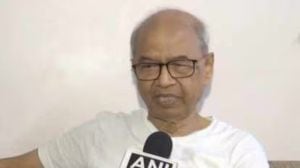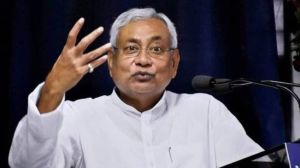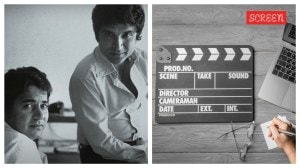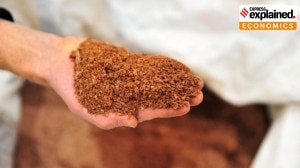Taj Mahal in Central Park
The dancers, chefs, actors, musicians, singers have all played their parts in the Incredible India@60 juggernaut in New York and are back home.

The dancers, chefs, actors, musicians, singers have all played their parts in the Incredible India@60 juggernaut in New York and are back home. The event was in many ways an incredible effort. To create a transitory Little India in a river of a megapolis is a tricky proposition. New York has witnessed every publicity jig under the sun — from semi-nude people wearing barrels around their middles (‘Life in the Poorhouse is no life at all’) to demonstrate against debt, to Chinese takeaways peddling the virtues of their ‘yum-yum’ fare. New Yorkers, hermeneutically sealed from the world by their cell phones and iPods as they walk like zombies through Manhattan’s streets to their chrome-and-glass offices in the sky, are satiated, self-driven and too stretched for time to register much beyond their immediate obsessions.
For the organisers of this multi-layered show it meant five unrelenting months of planning — two and a half just to get clearance for the sites needed to stage the various events. At first, Times Square, the Rockefeller Centre, the Bronx Zoo and Central Park were identified. “We had several ambitious plans, including pitching up the Taj Mahal in Central Park, and transporting two artificial elephants, conceived by Nitin Desai which weigh a thousand tonnes each. Finally, we had to settle for the Port Authority Bus Station for Sudarshan Patnaik’s sand sculpture of the Taj, and Bryant Park and South Street Seaport for the cultural events,” explained Amitabh Kant, former additional secretary, tourism. Kant saw this initiative as the “best way” to penetrate the heart of the globalised world and differentiate India from other tourist destinations by deploying resources in a focused manner and through a public-private partnership with the CII. The latter, it appears, bore a major chunk of the expenses.
The logistics of transporting and accommodating some 45 classical dancers, 140 performers and folk artistes, 15 technical assistants, 15 chefs, 10 handicraft specialists and getting US visas for them in time was another long story. Said Alka Jha, director, ministry of culture, “There were constant challenges to face. For instance, the stage on which the dancers were performing at the South Street Seaport was covered with linoleum. Under the late summer sun the surface had become far too hot and our dancers were starting getting sores on their feet. So it needed to be covered and sprinkled with ice-cold water.”
So the question is: Was the Incredible India@60 campaign — estimates for which range from $10-20 million — worth the effort? It is never easy to answer such a query, given the fact that returns on brand-building exercises don’t lend themselves to neat tabulation.
Sanjay Kothari, additional director-general, tourism, put it this way, “We have begun the process of highlighting India. It’s now a question of institutionalising it.” There was a two-fold objective. “We wanted to project the globalised face of India — its growth rate of 9 per cent, the fact that it is the world’s fourth largest internet user, and that sort of thing. Second, we wanted to tell Americans that there is more to India than the golden triangle of Delhi-Agra-Jaipur, that this is a country with 26 World Heritage Sites and a variety of languages and cultures.” Kothari saw this as a continuation of the ‘Incredible India’ mother campaign, which had had its run in the UK and Europe. “The idea was to showcase India when the world’s leaders assembled in New York for the UNGA and that we have achieved.”
The timing had its disadvantages. The attention of the media — which is severely US-centric at the best of times — was focused on the UNGA party with its sideshows like the Iranian president’s statements. Although Incredible India@60 did get a three-minute slot in ABC’s ‘Good Morning America’, no major American newspaper bothered to report or comment on it. The crowds that turned up at the various venues comprised largely those of Indian descent, although many American tourists buzzing around the South Street Sea Port complex also lingered awhile to watch the ‘Indiyan’ carnival there and even nibble on a tiny samosa, handed over gratis in small plastic bowls with tamarind ‘sauce’ — a taste of Incredible India, and all that.
“We also wanted to reach out to NRIs, so we are not disappointed that they turned out in large numbers,” said Jha. NRIs comprised a significant proportion of US travellers to India — projected in the current year to be around 18-19 per cent of the market share. It is this potential that the organisers of the New York show hoped that the Incredible India@60 gala would build upon.
But Indian tourism and its promoters will still have to contend with one major factor: Real India. Tourist posters can afford to ignore large pockets of mass deprivation, overlook ugly incidents of rape and crime against travellers, edit out widespread environmental destruction and poor water quality, but the tourists cannot. One NRI posed a niggling question to Kamal Nath, Union minister for trade, at the Pravasi Bharatiya Diwas meet in New York: “Sir, when will I be able to eat a salad in Delhi without getting ‘delhi belly’?” The minister tried to laugh away the comment by saying, “You should be like me. No germ can stand me”, adding that a new food law was on the anvil. But this is just one more reason why there can be no getting away from the fact that if Incredible India@60 is to work, it needs a Credible India@60.





- 01
- 02
- 03
- 04
- 05


























